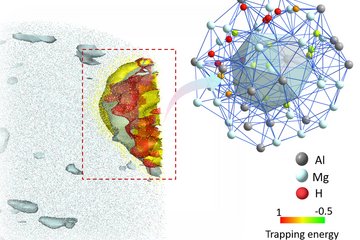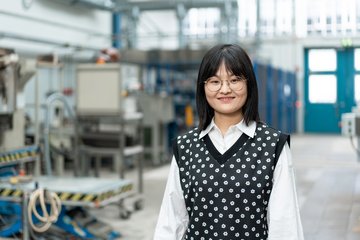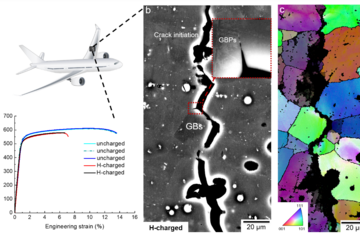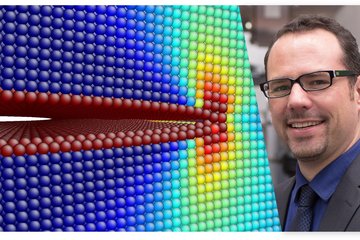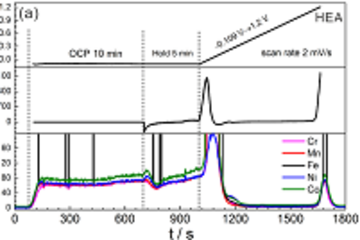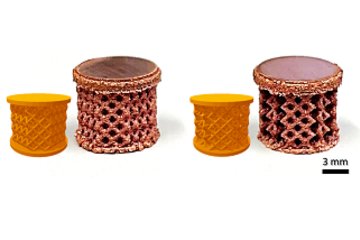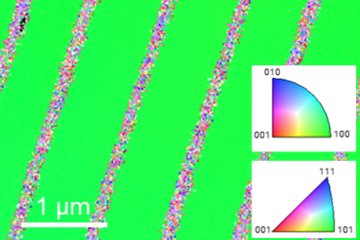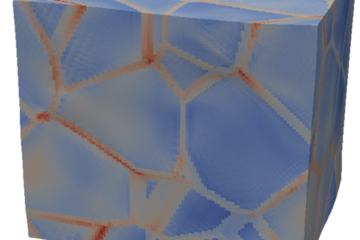All genres
1.
Journal Article
Surface hardening of high modulus steels through carburizing and nitriding: First insights into microstructure property relationships. Surface and Coatings Technology 494 (Part 1), 131354 (2024)
2.
Journal Article
High Modulus Steel Produced by Cold Spray Additive Manufacturing. Metallurgical and Materials Transactions B 53 (3), pp. 1948 - 1957 (2022)
3.
Journal Article
A combinatorial study of the effect of Al and Cr additions on the mechanical, physical and corrosion properties of Fe. Materials Today Communications 29, 102947 (2021)
4.
Journal Article
On the effect of carbon content and tempering on mechanical properties and stiffness of martensitic Fe–18.8Cr–1.8B–xC high modulus steels. Materials Science and Engineering A: Structural Materials Properties Microstructure and Processing 809, 141000 (2021)
5.
Journal Article
Current Challenges and Opportunities in Microstructure-Related Properties of Advanced High-Strength Steels. Metallurgical and Materials Transactions A 51, pp. 5517 - 5586 (2020)
6.
Journal Article
Additive manufacturing of high modulus steels: New possibilities for lightweight design. Additive Manufacturing 32, 101033 (2020)
7.
Journal Article
Property-Driven Development of Metallic Structural Materials by Combinatorial Techniques on the Example of Fe–C–Cr Steels. Steel Research International 90 (12), 1900404 (2019)
8.
Journal Article
On the effect of Ni additions to Fe – Cr – B high modulus steels. Materials and Design 167, 107624 (2019)
9.
Journal Article
Development of high modulus steels based on the Fe – Cr – B system. Materials Science and Engineering A: Structural Materials Properties Microstructure and Processing 724, pp. 142 - 147 (2018)
10.
Journal Article
Stiff, light, strong and ductile: nano-structured High Modulus Steel. Scientific Reports 7 (1), 2757 (2017)
11.
Journal Article
Strengthening Fe – TiB2 based high modulus steels by precipitations. Materials and Design 124, pp. 183 - 193 (2017)
12.
Journal Article
Properties of particle phases for metal-matrix-composite design. Data in Brief 12, pp. 692 - 708 (2017)
13.
Journal Article
Combinatorial screening of the microstructure–property relationships for Fe–B–X stiff, light, strong and ductile steels. Materials and Design 112, pp. 131 - 139 (2016)
14.
Journal Article
Effects of Mn additions on microstructure and properties of Fe–TiB2 based high modulus steels. Materials and Design 111, pp. 185 - 191 (2016)
15.
Journal Article
Efficient additive manufacturing production of oxide- and nitride-dispersion-strengthened materials through atmospheric reactions in liquid metal deposition. Materials and Design 111, pp. 60 - 69 (2016)
16.
Journal Article
Efficient liquid metallurgy synthesis of Fe–TiB2 high modulus steels via in-situ reduction of titanium oxides. Materials and Design 97, pp. 357 - 363 (2016)
17.
Book Chapter
High-Modulus Steels. In: High-Performance Ferrous Alloys, pp. 291 - 326 (Ed. Rana, R.). Springer Nature Switzerland, Cham, Switzerland (2021)
18.
Conference Paper
Alloy design and processing routes for novel high modulus steels. In: PTM 2015 - Proceedings of the International Conference on Solid-Solid Phase Transformations in Inorganic Materials 2015, p. 981 (Eds. Chen, L.-Q.; Militzer, M.; Botton, G.; Howe, J.; Sinclair, C. W. et al.). International Conference on Solid-Solid Phase Transformations in Inorganic Materials 2015, PTM 2015, Whistler, BC, Canada, June 28, 2015 - July 03, 2015. PTM 2015, Whistler, British Columbia (2015)
19.
Talk
Design of cost-efficient high modulus steels as innovative lightweight materials. Advanced Composite Materials Congress, Stockholm, Sweden (2018)
20.
Talk
Alternative pathways for high modulus steel design – a combinatorial approach utilising Fe–B–X. MSE Congress, Darmstadt, Germany (2016)
